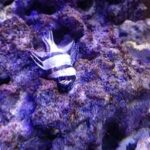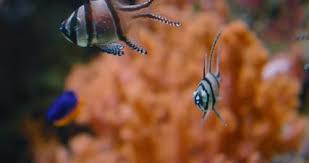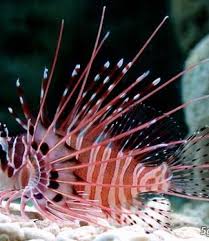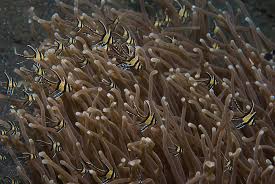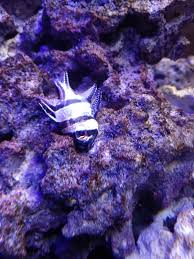Key Takeaways
- Understand the Habitat: Gnats thrive in moist environments and organic decay; reducing these conditions is crucial for prevention and control.
- Natural and Chemical Solutions: Both natural remedies and chemical treatments can be effective in eliminating gnats, with strategies tailored to the specific gnat species and infestation location.
- Preventative Measures: Maintaining cleanliness, managing moisture, and sealing entry points are essential to keep gnats at bay.
- Consistency is Key: Regular monitoring and maintenance are vital for long-term gnat management and prevention.
- Adapt and Apply: Real-life case studies demonstrate the importance of adapting strategies to specific scenarios for successful gnat control.
Introduction
Gnats, those tiny flying nuisances, can invade our homes, gardens, and workplaces, creating discomfort and potential health risks. This comprehensive guide delves into effective strategies for gnat management, spanning from understanding these pests and their habitats to implementing practical elimination methods and preventative measures. Through a blend of environmental adjustments, natural remedies, chemical controls, and real-life case studies, we offer a holistic approach to dealing with gnats. Whether you’re battling fruit flies in your kitchen, fungus gnats in your plants, or drain flies in moist areas, this article equips you with the knowledge and tools to create a gnat-free environment.
Understanding Gnats and Their Habitat
Gnats, often referred to as fruit flies or fungus gnats, are small flying insects that can become a nuisance in homes, gardens, and businesses. These pests are not just annoying; they can also pose health risks by spreading bacteria. This guide begins with an exploration of what gnats are, the conditions that attract them, and the reasons why managing their population is crucial for maintaining a healthy living environment.
What Are Gnats?
Gnats are tiny flying insects that belong to several species. The most common types found in households and gardens include fruit flies, fungus gnats, and drain flies. Each species has its preferences for habitat and breeding conditions, but all share the common trait of being attracted to moist environments and organic material.
Fruit flies, for instance, are attracted to ripe, fermenting fruits and vegetables, making kitchens and grocery stores prime locations for infestations. Fungus gnats prefer the moist soil of houseplants or overwatered gardens to lay their eggs. Drain flies seek out the slime that accumulates in drains, sewers, and septic tanks.
The Habitat of Gnats
Understanding the habitat preferences of gnats is crucial for effective control. These insects thrive in warm, moist environments. Overripe fruits, vegetables, and other decaying organic matter provide both a food source and a breeding ground for fruit flies. Overwatered plants or soil rich in organic material are ideal for fungus gnat larvae, while neglected drains and pipes can harbor drain flies.
The common denominator across these habitats is the presence of moisture and organic matter. Consequently, managing these conditions is a fundamental step in preventing and eliminating gnat infestations.
Why Getting Rid of Gnats Is Important
Beyond their nuisance factor, gnats can pose health risks. Fruit flies, for example, can contaminate food with bacteria and other pathogens as they move from unsanitary conditions to food sources. Fungus gnats, while less likely to spread disease, can damage plants by feeding on their roots, affecting their growth and health.
Moreover, a gnat infestation can indicate underlying issues, such as overwatering plants or poor sanitation, that can attract other pests or lead to mold growth. Addressing a gnat problem thus goes hand in hand with improving the overall cleanliness and health of the environment.
Strategies for Eliminating Gnats
After understanding the nature and habitat of gnats, the next step is to explore effective strategies for eliminating these pests. This section outlines a comprehensive approach to gnat control, focusing on environmental adjustments, natural remedies, and chemical interventions. These methods aim not only to address current infestations but also to prevent future occurrences by creating conditions that are unfavorable for gnats.
Environmental Adjustments
The foundation of gnat control lies in altering the environment to make it less inviting for these pests. Since gnats thrive in moist and organic-rich conditions, the following adjustments can significantly reduce their presence:
- Reduce Moisture: Fix leaky faucets, ensure good drainage in plant pots, and avoid overwatering plants. In kitchens and bathrooms, use exhaust fans or dehumidifiers to reduce humidity. These actions help create a drier environment that is less attractive to gnats.
- Proper Waste Management: Dispose of organic waste properly and regularly. Use bins with tight-fitting lids to prevent gnats from accessing food scraps. Regularly clean trash cans and recycling bins to remove residues that could attract gnats.
- Food Storage: Store fruits and vegetables in the refrigerator rather than leaving them exposed on countertops. Keep pantry items in sealed containers to prevent gnats from accessing and laying eggs in food sources.
Natural Remedies
In addition to environmental adjustments, several natural remedies can be effective in controlling gnat populations. These methods are safe for use around pets and children and offer a more environmentally friendly alternative to chemical pesticides:
- Vinegar Traps: Mix apple cider vinegar with a few drops of dish soap in a bowl and cover it with plastic wrap. Poke small holes in the wrap to allow gnats to enter. Attracted by the vinegar’s scent, gnats will get trapped by the soap.
- Essential Oils: Certain essential oils, such as peppermint, eucalyptus, and tea tree oil, have been found to repel gnats. Dilute a few drops of these oils in water and spray around affected areas to deter gnats.
- Diatomaceous Earth: This naturally occurring, fine powder can be spread in the soil of potted plants to kill fungus gnat larvae. Diatomaceous earth causes dehydration in insects, effectively reducing the gnat population without harming plants.
Chemical Controls
When natural remedies and environmental adjustments are insufficient, chemical controls can offer a more robust solution. However, these should be used as a last resort due to their potential impact on non-target organisms and the environment:
- Insecticidal Soaps: Safe for use on plants, insecticidal soaps can kill gnats on contact without harming the plant. They are particularly effective against fungus gnat larvae in the soil.
- Pyrethrin-based Insecticides: Derived from chrysanthemum flowers, pyrethrins are natural insecticides that can effectively control gnat populations. They are available in spray forms and can be used to treat infested areas.
- IGR (Insect Growth Regulators): IGRs interfere with the development of insects, preventing them from reaching maturity and reproducing. Applying IGRs to affected areas can help break the life cycle of gnats, providing long-term control.
Preventative Measures to Keep Gnats Away
Having explored strategies for eliminating gnats, it’s equally important to focus on prevention. Preventative measures are key to ensuring that gnats do not find your home or garden inviting in the first place. This section will cover comprehensive strategies to prevent gnats from becoming a recurring problem, emphasizing the importance of environmental management, regular maintenance, and proactive measures.
Maintaining a Clean Environment
A clean environment is fundamental in preventing gnat infestations. Here are some critical aspects to consider:
- Regular Cleaning: Keep kitchen counters, sinks, and floors clean of food residues and spills. Regularly clean and dry areas where moisture accumulates, such as bathrooms and basements, to deter gnat attraction.
- Properly Store Food: Ensure that all food items, especially fruits and vegetables, are stored in sealed containers or refrigerated. This not only keeps gnats away but also maintains food freshness.
- Manage Compost and Garbage: Compost bins and garbage should be covered and emptied regularly. If possible, keep compost bins at a distance from your home to avoid attracting gnats and other pests.
Optimizing Plant Care
Since gnats are often attracted to overwatered plants or soil with high organic matter, optimizing plant care is essential:
- Avoid Overwatering: Water plants only when necessary, allowing the soil to dry between waterings. This practice is not only good for plant health but also discourages fungus gnat infestations.
- Use Appropriate Soil: For houseplants, use well-draining soil and pots with drainage holes to prevent excessive moisture, which can attract gnats.
- Monitor Plant Health: Regularly check plants for signs of stress or disease, as weakened plants can be more susceptible to gnat infestations. Remove dead leaves and debris from plant pots to eliminate potential gnat breeding sites.
Sealing Entry Points
Preventing gnats from entering your home is a critical step in long-term management:
- Install Screens: Ensure that windows and doors have tight-fitting screens to prevent gnats and other insects from entering.
- Seal Cracks and Openings: Inspect your home’s exterior for cracks, holes, and other openings. Use caulking or weatherstripping to seal these potential entry points for gnats.
Using Natural Repellents
Incorporating natural repellents can help deter gnats from settling in your home or garden:
- Plant Gnat-Repellent Plants: Certain plants, such as lavender, marigold, and basil, are known for their insect-repellent properties. Planting these around your home or in your garden can help keep gnats at bay.
- Essential Oil Diffusers: Using essential oil diffusers with gnat-repellent oils like peppermint, lemongrass, or citronella can help create an environment that is less attractive to gnats.
Case Studies and Real-Life Applications of Gnat Management
In the final section of our comprehensive guide on how to get rid of gnats, we delve into case studies and real-life applications that illustrate the effectiveness of the strategies discussed in previous sections. These examples showcase how homeowners, gardeners, and businesses have implemented environmental adjustments, natural remedies, chemical controls, and preventative measures to successfully manage gnat infestations.
Case Study 1: Residential Kitchen Overhaul
In the first case, a family was plagued by a persistent fruit fly infestation in their kitchen. Despite regular cleaning, the gnats seemed endless. The solution came from a multi-pronged approach:
- Initial Clean-up: The family started with a deep cleaning of the kitchen, focusing on areas that were often overlooked, such as under appliances and inside drain traps.
- Storage Reevaluation: They switched to storing all produce in the refrigerator or sealed containers, eliminating the gnats’ food source.
- Vinegar Traps: Homemade vinegar traps were placed around the kitchen to capture lingering gnats.
- Regular Maintenance: The family adopted a strict routine of disposing of garbage and compost daily and cleaning spills immediately.
Within a week, there was a significant decrease in gnat activity, and within a month, the infestation was resolved. This case highlights the importance of thoroughness and consistency in environmental management.
Case Study 2: Garden and Greenhouse Restoration
A small greenhouse owner struggled with fungus gnats affecting plant health and customer experience. The moist environment of the greenhouse provided an ideal breeding ground for gnats. The owner implemented several changes:
- Soil and Water Management: Overwatering was identified as a key issue. The owner installed moisture meters to ensure plants were only watered as needed.
- Beneficial Nematodes: To combat the larvae in the soil, the owner introduced beneficial nematodes, which naturally predate fungus gnat larvae without harming the plants.
- Physical Barriers: Fine mesh screens were installed on greenhouse vents and doors to prevent new gnats from entering.
These interventions led to a drastic reduction in the gnat population, improving both plant health and the greenhouse’s overall environment.
Case Study 3: Commercial Facility Makeover
A commercial office building faced a drain fly problem, with gnats emerging from sink drains in break rooms and bathrooms. The building management team tackled the issue through:
- Drain Treatment: A professional cleaning of all drains was conducted to remove the organic matter that drain flies breed in.
- Sealing Entry Points: Cracks and gaps around pipes and under doors were sealed to prevent flies from migrating from other areas.
- Educational Campaign: Employees were educated on the importance of not leaving food out and properly disposing of food waste.
These measures, combined with regular maintenance checks, eliminated the drain fly issue and improved the overall cleanliness of the facility.



